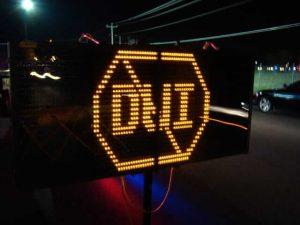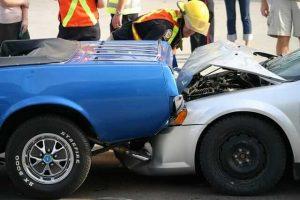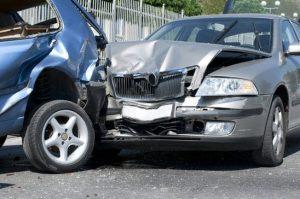
Left turns are dangerous because the driver must divert their attention to multiple hazards, including other vehicles, traffic lights, blind spots, and more. This type of maneuver is even harder when extra circumstances increase the risks associated with driving, such as night driving or poor weather.
Understanding why left-hand turns are dangerous may help you reduce the risk of a crash or even prevent an accident and injuries. If you were hurt in a left-turn collision, you may be able to hold the at-fault driver responsible.
The Hazards of Making Left-Hand Turns
According to the U.S. Department of Transportation (U.S. DOT), left-hand turns are among the most dangerous maneuvers a driver can make. This is drivers must anticipate multiple elements to operate the vehicle safely. Left turns are more dangerous than right turns because of the following:
- Sudden stops: If you are waiting behind another car as you are turning left, you might think the driver will complete the turn once it is started and avert your eyes to cross traffic. If you do not check to see if the driver in front of you finished the turn, you might rear-end them.
- Inability to judge speed: Timing is everything when making left turns. This assertion is particularly true when traffic is highly congested. Not gauging the right time to turn can result in a T-bone accident.
- Blind turns: Left turns require you to pay attention to traffic coming from both the left and right. However, blind turns make it difficult to accomplish this task since the driver must pay closer attention to unexpected traffic.
- Poor vantage point: If other drivers across the intersection are turning left, it makes it challenging for you to see around them. Drivers sometimes mistakenly believe the coast is clear when a car is speeding up to beat the light.
- Unfamiliar intersections: We do not realize it, but the familiarity of a daily commute provides the experience needed to drive safely. Unfamiliar intersections may have irregularities that you do not know about, creating a hazard.
- Traffic lights: Traffic lights set the signal cycle’s pace. However, when yellow lights appear, people race to make it through. Unfortunately, this can result in serious car accident injuries for everyone involved, especially when running a red light.
Vigilance is the cornerstone of safe driving. Knowing the applicable traffic laws, paying close attention when turning left, and practicing defensive driving are all crucial. This could save your life or someone else’s.
Every driver owes others on the roadway a duty of care. If another person acted negligently and caused your injuries in a left-turn accident, you can file a claim for compensation to cover your financial and physical losses.
For a free legal consultation, call 800-537-8185
Certain Factors May Make Left Turns Feel More Dangerous
According to a focus group that the U.S. Federal Highway Administration (FHWA) conducted, a few factors can cause left-turn accidents to feel even more dangerous. This could include:
- Traffic congestion: Making a left turn in heavy traffic can cause long delays. In turn, aggressive drivers hoping to make it across the intersection may press the gas pedal too quickly when it is not safe to do so. Neither of these is an optimal solution and can cause stress to the involved drivers and others on the roadway.
- Pedestrians in crosswalks: When waiting for a break in traffic to make a left turn, a driver might not notice pedestrians and cyclists in their path. Sometimes, they might overlook a motorcycle, as well. This situation is often attributable to the driver focusing on oncoming traffic.
- Driving at night: The glare of headlights makes it challenging to gauge other motorists’ speeds. This scenario is fertile ground for causing a car, truck, or motorcycle accident.
- Environment: Hills, blind turns, and other elements can make it challenging to initiate a left-hand turn quickly, especially in congested areas.
- Road conditions: Most drivers usually initiate a left-hand turn from the stopped position. In areas battling rainy, icy, or snowy conditions, this can cause drivers to experience reduced visibility, difficulty gaining traction, or other issues with vehicle performance.
- Type of vehicle: Smaller vehicles are harder to see, which means other drivers may not notice those making left turns. Large vehicles, on the other hand, may have a slower acceleration speed and could miss out on turning fast enough.
Keep in mind that drivers are tasked with driving carefully despite these factors. If one or more of them affected another driver and they caused your accident, they can still be held responsible. All motorists must make good decisions, follow traffic rules, and be mindful of others’ safety. Drivers who ignore this advice may be on the hook for causing you or your loved ones’ accident injuries.
Getting Help for Your Financial Losses After a Collision
If you were hurt in a left-hand turn crash, you may be able to file an insurance claim or civil suit against the at-fault driver. This could mean recovering damages to pay your medical bills, cover lost wages, repair your car, and compensate you for your pain and suffering and other non-economic damages.
Personal injury law firms handle most car accident suits, and they typically provide free consultations to victims and their families. They also manage these cases based on contingent fees. You should not have to pay anything upfront.
Call Morris Bart, LLC, About Your Left-Turn Accident Injuries
There is a limited time to file a lawsuit and seek compensation related to your accident injuries. You should contact a car accident attorney at the Morris Bart law firm as soon as possible to ensure you meet the applicable deadlines. We have 15 offices and serve clients in Louisiana, Mississippi, Alabama, and Arkansas. We are a contingency fee law firm.
Call our team of car accident attorneys for your free case evaluation today at (800) 537-8185.
Questions?Call 800-537-8185
to find a Morris Bart office near you.





